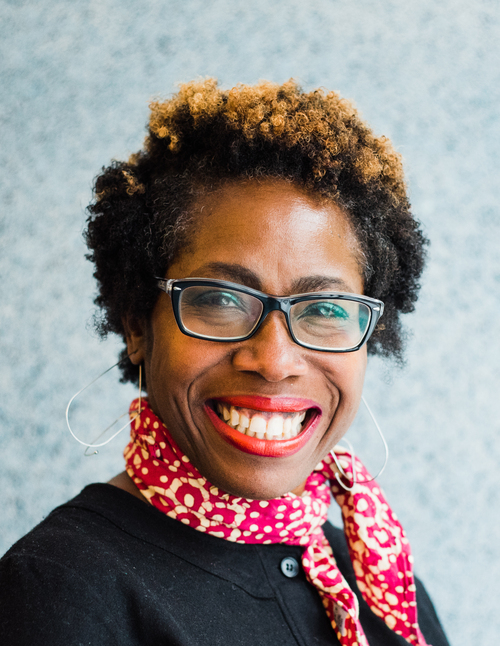Yvonne Howard is a Diversity & Inclusion Consultant at EW Group, a full-service diversity and inclusion consultancy. In this article, she discusses ways that the construction industry can improve its equality, diversity, and inclusion policies, and what the benefits and pitfalls could be for the sector
The business case for diversity and inclusion in the workplace is as fiercely important today as it has ever been across all industries. In the wake of huge cultural and political movements such as Brexit, #MeToo, Black Lives Matter, recent pushes for LGBT inclusivity, and the impact of Covid-19, businesses the world over are under pressure to keep evolving and to demonstrate their commitment to equality, diversity, and inclusion (EDI) in support of their business sustainability, growth and reputation.
In recent years, the construction industry has taken a number of steps towards achieving a better understanding of the benefits that EDI can deliver within the workplace, and the sector and companies have taken action to realise these business benefits.
However, despite these significant changes, the construction sector remains a male-dominated industry in the UK and there are opportunities for companies to further apply a strategic focus on improving diversity and creating cultures where difference is valued and utilised.
The statistics for the industry are concerning:
- Women make up just 15% of the UK construction industry workforce, with only an estimated 2% working on-site.
- Black, Asian and minority ethnic employees make up just 6% of the industry.
- Disabled employees make up just 6% of the workforce.
- 60% of LGBTQ+ employees have experienced homophobic and derogatory terms at work.
With a large percentage of the industry leaders consisting of white males, there is an increased risk of unconscious bias in decision making, and a tendency for work cultures off and on site to be based around a majority view and behaviour.
This can result in the acceptance of inappropriate behaviour and language as “normal” practice, often leading those on the receiving end of discriminatory comments or behaviour to leave their team, company or the industry. Subsequent sharing of these lived experiences can discourage others from joining the sector due to the possible risk of prejudice.
As a sector with a growing skills shortage, many construction companies are considering ways to encourage more people to pursue a career in the industry, and opening opportunities to groups who may have perhaps felt unwelcome previously is a great solution to the shortage.
There are several advantages of implementing good EDI strategies. These include:
- Better understanding of the needs of diverse clients and their clients, especially when working within global markets
- Efficiency and financial savings through improved staff retention and better decision making.
- A wider pool of talent available to the industry from under-represented groups.
- Improved on-site working relationships based on respect and understanding of individual’s needs and differences.
Construction leaders and managers throughout the construction supply chain need to recognise that the diverse nature of the broader UK workforce can no longer be ignored. Many workplaces feature a multitude of different personal and professional cultures, contributing major benefits to all kinds of businesses.
To embrace these effectively – including all genders, sexualities, abilities and the other characteristics that make up the UK workforce – decision makers must develop a diversity and inclusion strategy. A diversity strategy allows you to make your business more inclusive and welcoming to all: staff, partners and customers alike.
Diversity strategies can have many goals; such as increasing the number and seniority of ethnic minority staff within your business, making your workplace environment and culture friendly to all, and/or to ensure your business is meeting its legal obligations.
Diversity strategies support you in offering the workplace benefits of equality, diversity and inclusion, whilst also tapping into the business case for EDI, gaining more perspectives, greater employee wellbeing, increased innovation, a larger talent pool, better customer understanding, improved problem solving and enhanced business performance.
Specific EDI strategies
The benefits are clear, but what are the specific strategies that can be introduced in the construction industry to improve EDI?
- Recruitment – the construction industry needs to approach recruitment as one of the most significant drivers for improving workplace diversity. If your managers or recruiters make decisions based on bias, you are not recruiting diverse candidates, and your workforce and leadership will become homogenous over time, making the issue worse.
- Day-to-day management – it is important for managers to understand employee perceptions of work and make sure they understand what the expectations of the organisation are. Managers need to understand the importance of EDI and how they can manage that day-to-day.
- Company policies – closely related to day-to-day management and the need to promote transparency in the development of clear, standardised and regularly updated policies, are crucial to managing diversity in business.
- Culture and environment – Cultivating a positive workplace culture and environment is key to fostering diversity and ensuring that employees of all backgrounds and cultures feel included and able to play a valuable part within your organisation.
Communicating diversity in the construction industry
When a construction business is introducing and implementing a new EDI strategy, it must be effectively communicated within the organisation to have the desired effect and impact.
For many, undergoing training or adhering to policies that fall under EDI may seem like a ‘telling-off’, or being told what to do, which could easily lead to resentment towards management. It could also generate resistance to diversity and inclusion initiatives, and even the most well-intentioned interventions can create more issues.
Therefore, communicating EDI effectively is crucial – not only are you explaining what you want to achieve by creating an inclusive office and site culture, but you’re also explaining why EDI is important for everyone, at every level of the business.
Simple ways to ensure you recruit diversely
As discussed earlier, recruitment is a key driving factor in the construction industry becoming more EDI focussed.
Here are some simple ways for a business to become a more diverse recruiter:
- Write inclusive job descriptions
- Build relationships with recruitment firms with access to diverse groups and talent pools
- Look for opportunities to hire people without specific experience but with abilities and transferable skills
- Inclusively design your application process
- Make shortlisting fair
- Allow for reasonable adjustments at the interview
- Prepare for an inclusive interview
- Run an inclusive interview with the right tone, asking the correct questions
Challenges to achieving workplace diversity and unconscious biases
There are some key challenges associated with implementing effective EDI best practices and achieving subsequent success, and business leaders in the construction industry must learn what they are and how to overcome them:
- Staff retention – Staff retention is key for success and profitability. Becoming more focused on EDI requires a significant investment of time and money, including the induction and training of new and existing staff, which is easily lost when the individual leaves. Businesses need to find ways to retain current team members as the business goes through these changes, while also attracting a new, more diverse workforce.
- Staff engagement – Engagement and buy-in to the diversity agenda is a must, and you should start at the top and involve the whole business. EDI initiatives need to address intersectionality – the compound layering of disadvantage – if they are to bring everyone into the conversation. Otherwise, an isolated, strand-specific approach will lead people to think they are isolated and excluded.
Where to begin…
While it may seem like a daunting task, the construction industry will benefit greatly from improving equality, diversity, and inclusion.
It is best to adopt a holistic approach that considers organisational data, the lived experiences of staff, business challenges and goals, brand and talent. A thorough diversity audit is the most effective place to start.
From here, you can map out the current position and state of employee engagement.
Yvonne Howard
Diversity & Inclusion Consultant
EW Group
Twitter: @theewgroup
LinkedIn: EW Group














